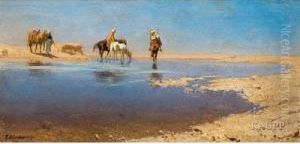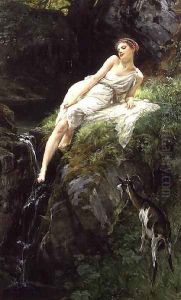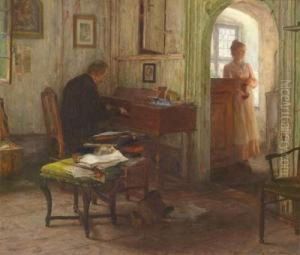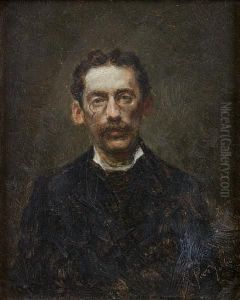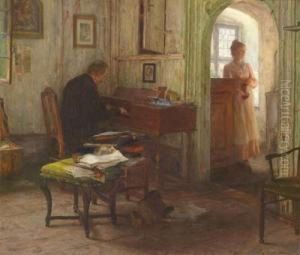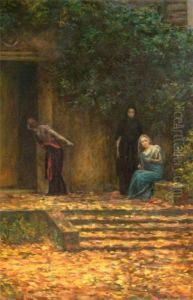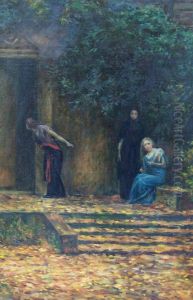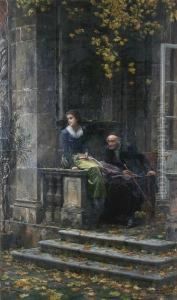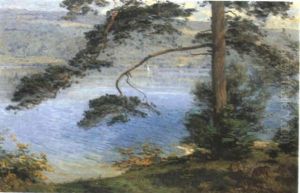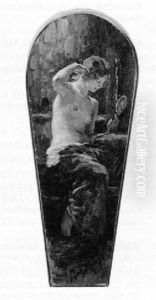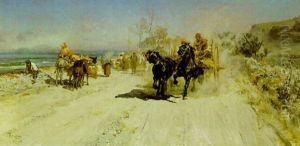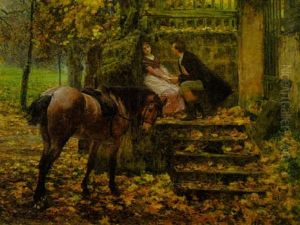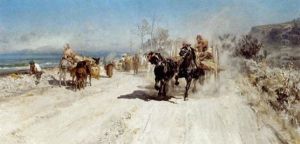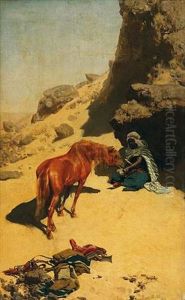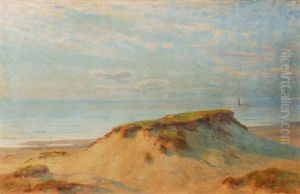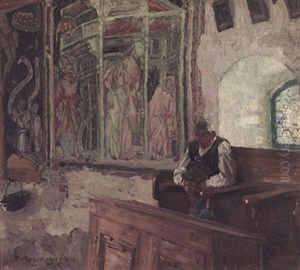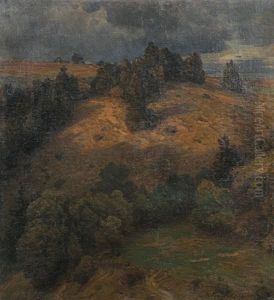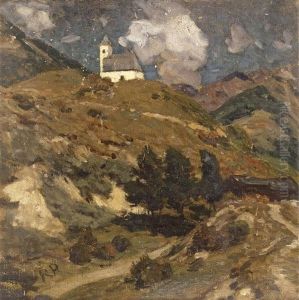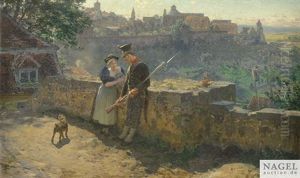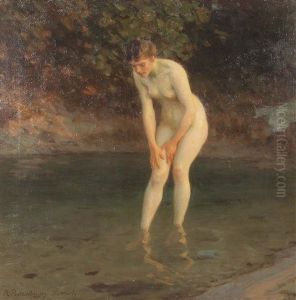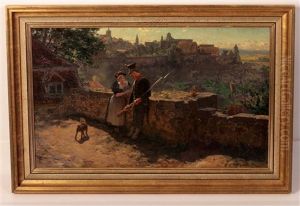Robert Poetzelberger Paintings
Robert Poetzelberger was an Austrian painter and sculptor born in 1856, in the city of Salzburg. His artistic journey began at a young age, showing an early talent in both painting and sculpture, which led him to pursue formal education in the arts. He studied at the Academy of Fine Arts Vienna, where he honed his skills and developed a distinctive style that would later become recognized for its originality and depth of expression. Poetzelberger's work is often noted for its detailed realism combined with a unique sensitivity to the nuances of human emotion and natural beauty.
Throughout his career, Robert Poetzelberger was deeply influenced by the cultural and artistic movements of his time, particularly by the Symbolist movement, which sought to express the more emotional and mystical aspects of the human experience through art. His paintings and sculptures frequently explored themes of mythology, nature, and the human psyche, imbued with a sense of romanticism and a deep appreciation for the aesthetic. Despite this, he maintained a commitment to realism, ensuring his works retained a tangible connection to the world around him.
Poetzelberger's contributions to the art world were not limited to his own creations. He was also an influential teacher, sharing his knowledge and passion for art with a new generation of artists. In 1899, he was appointed as a professor at the Academy of Fine Arts in Vienna, a position he held until his retirement. During his tenure, he influenced numerous students, instilling in them a respect for both the technical mastery and emotional depth of art.
Over his lifetime, Robert Poetzelberger received several accolades for his work, including recognition from various art institutions and societies. His works were exhibited widely across Europe, and his sculptures and paintings are part of several prestigious collections. Despite his success, he remained devoted to his artistic vision, continually exploring new techniques and subjects until his death in 1930.
Today, Robert Poetzelberger is remembered as a pivotal figure in the Austrian art scene of the late 19th and early 20th centuries. His legacy is carried on through his contributions to art education and the enduring appeal of his works, which continue to captivate audiences with their beauty and depth. Through his artistic achievements, he has secured his place in the annals of art history as a master of realism and an explorer of the human condition.
